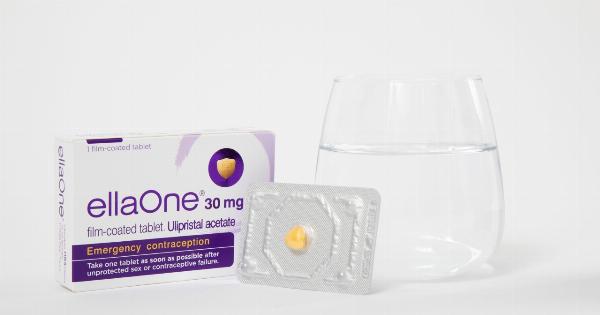Pregnancy prevention is an important consideration for many individuals and couples who are not yet ready to start a family.
By utilizing effective methods of pregnancy prevention, individuals can have more control over their reproductive health and plan for pregnancy when the time is right. In this article, we will explore ten proven methods for preventing pregnancy.
Hormonal Methods
Hormonal methods of pregnancy prevention involve the use of synthetic hormones to prevent ovulation or create an inhospitable environment for sperm. These methods include:.
1. Birth Control Pills
Oral contraceptives, commonly known as birth control pills, are a reliable and widely-used method of pregnancy prevention.
They work by regulating hormones to suppress ovulation and thickening the cervical mucus, making it difficult for sperm to reach the egg.
2. Contraceptive Patch
The contraceptive patch is a thin, beige patch that is applied to the skin to release hormones that prevent pregnancy. It works similarly to birth control pills but only needs to be changed once a week.
Barrier Methods
Barrier methods of pregnancy prevention physically block sperm from reaching an egg. These methods include:.
3. Male Condoms
Male condoms are one of the most widely used methods of pregnancy prevention. Made of latex or polyurethane, they are worn over the penis and act as a barrier, preventing sperm from entering the vagina.
4. Female Condoms
Similar to male condoms, female condoms are worn inside the vagina to prevent sperm from reaching the egg. They are made of polyurethane and can be inserted hours before intercourse.
Intrauterine Devices (IUDs)
IUDs are small, T-shaped devices that are inserted into the uterus to prevent pregnancy. There are two types of IUDs:.
5. Copper IUD
The copper IUD releases copper ions into the uterus, which immobilize sperm and prevent fertilization. It is highly effective and can last up to 10 years.
6. Hormonal IUD
The hormonal IUD, also known as the intrauterine system (IUS), releases progestin to prevent pregnancy. It works by thickening the cervical mucus, inhibiting sperm movement, and thinning the uterine lining.
Fertility Awareness-Based Methods (FAM)
FAM involves tracking menstrual cycles and fertility signs to determine when pregnancy is most likely to occur. These methods include:.
7. Calendar Method
With the calendar method, individuals track their menstrual cycle over several months to identify the days when they are most fertile. They avoid sexual intercourse or use backup methods during this window.
8. Basal Body Temperature Method
This method involves tracking basal body temperature (BBT), the lowest body temperature during rest. A rise in BBT indicates ovulation has occurred, indicating fertile days.
Emergency Contraception
Emergency contraception is used after unprotected intercourse or contraceptive failure to prevent pregnancy. It includes:.
9. Morning-After Pill
The morning-after pill, also called emergency contraceptive pills, contains high doses of hormones that prevent pregnancy by inhibiting ovulation or fertilization.
Sterilization
Sterilization is a permanent form of pregnancy prevention. The two common methods are:.
10. Tubal Ligation or Vasectomy
Tubal ligation involves surgically sealing the fallopian tubes in women to block eggs from reaching the uterus. Vasectomy is a surgical procedure that involves cutting or blocking the vas deferens, preventing sperm from mixing with semen.
Conclusion
There are various effective methods available for pregnancy prevention, ranging from hormonal and barrier methods to intrauterine devices, fertility awareness-based methods, emergency contraception, and sterilization procedures.
Each method has its own advantages and suitability based on individual preferences and needs. It is crucial to consult with a healthcare provider to determine the most suitable method for effective pregnancy prevention.






























